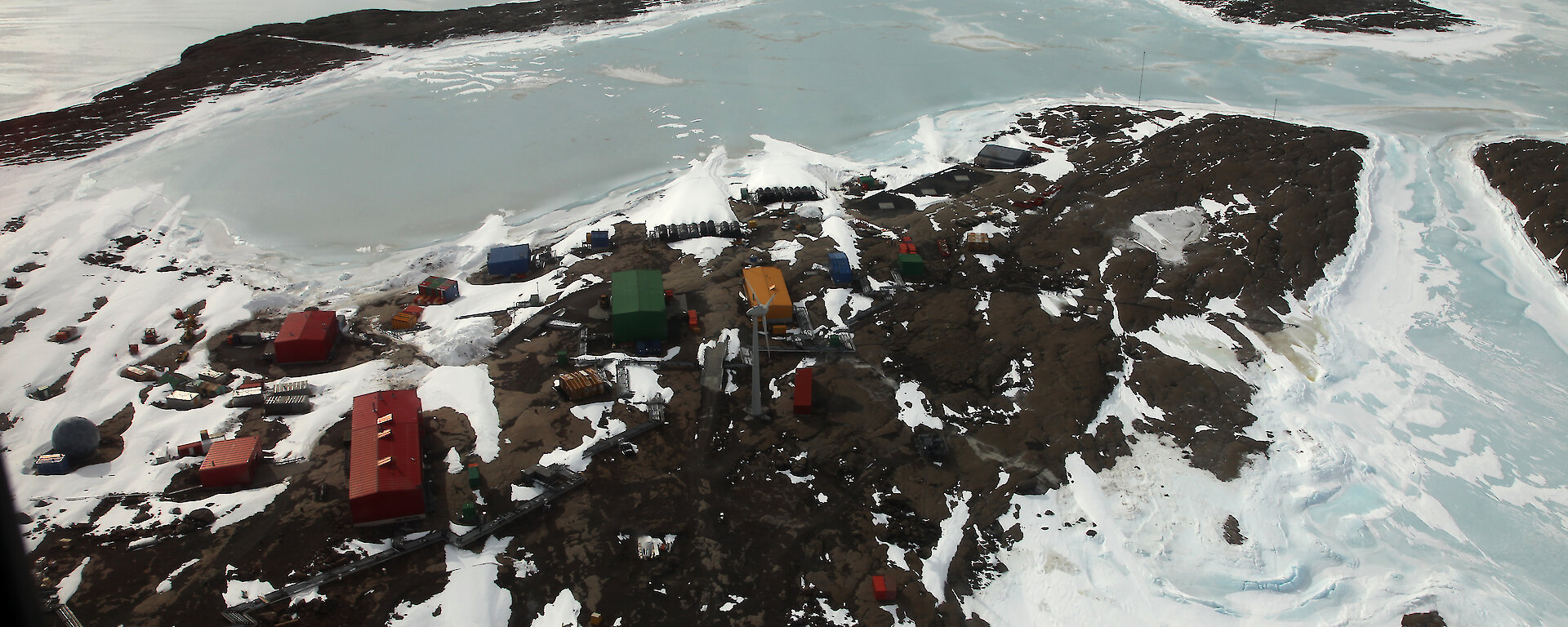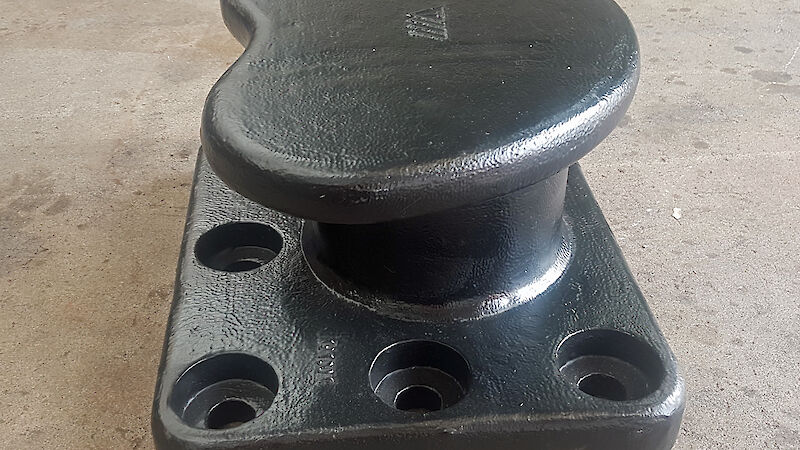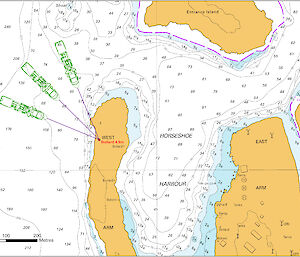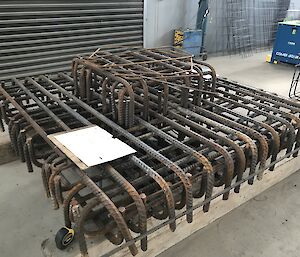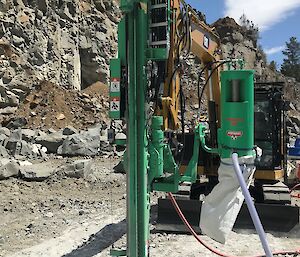Four hundred kilograms of steel and several tonnes of concrete is set to secure Australia’s new multi-million dollar icebreaker, RSV Nuyina, to a finger of rock off Mawson research station.
A 125-tonne-rated bollard will sit, statue-like, on a concrete plinth on West Arm, outside Horseshoe Harbour, allowing the 160.3 metre-long ship to tie up when resupplying the station.
However finding a suitable location for the kidney-shaped bollard, designing its supporting infrastructure, and working through the logistics of installation, has been a complex task.
Icebreaker Project Officer and former ships’ Captain, Mike Jackson, said hydrographic surveys by the Royal Australian Navy showed that the ship had to be tethered to West Arm, as glacial scouring of the ocean floor made it too smooth for an anchor to hold.
A mooring simulation by a private contractor, and subsequent terrestrial surveys by Australian Antarctic Division personnel, Geoscience Australia and icebreaker Captain, Scott Laughlin, identified a location within 20 metres of the water line, with suitable rock to anchor the bollard, and room for the ship to safely swing on its mooring lines in up to 30 knot winds.
“The mooring simulation showed the ship could be tethered with its normal berthing lines, provided the bollard was installed no more than five metres above sea level,” Mr Jackson said.
“This height will ensure the correct distribution of load between the bollard and the ship’s line winches, when the ship is fully loaded at low tide.”
Mr Jackson sourced the bollard from Swedish engineering company Trelleborg. While it is rated to 125 tonnes, it’s unlikely to experience that amount of force.
“Thirty knots of wind generates about 70 tonnes of force, and the ship will propel astern with about six tonnes of force to keep the lines straight; so the bollard is over-specced,” he said.
“If conditions don’t allow the ship to tie up, it can turn around and wait out the weather in Kista Strait.”
With a suitable bollard location identified, Australian Antarctic Division Capital Project Officer and engineer, Ron Wilson, commissioned a Tasmanian engineering firm to design the bollard’s installation.
“The bollard comes with seven one-metre-long steel bolts, which will be held in place on a reinforced concrete plinth,” Mr Wilson said.
“You could describe the plinth as having three sections, but it will be poured as one solid piece of concrete.”
The first 1.1 x 1.1 x 0.3 metre section of plinth will be set down 30 centimetres into a diamond cut section of rock.
A larger, 2.4 x 2.4 x 0.5 metre mid-section of concrete will straddle this, with two 5.3 metre-long rock anchors at either end, to transfer load deep into the rock.
An upper section of concrete, the same size as the lower section, will then sit on top.
“Connecting the three sections will be a 1.5 tonne pre-fabricated reinforcement cage, and the seven bollard bolts, set within the concrete,” Mr Wilson said.
To cope with the Antarctic conditions the plinth will be made from ‘Antarctic blend concrete’, which has additives that allow it to cure faster in cold temperatures. Special grout was imported from Canada to ensure the rock anchors remain secure at temperatures as low as –40°C.
With the design details sorted, the final challenge is the logistics of getting equipment and materials out to site to install the plinth and bollard.
In February a range of equipment was transported to Mawson research station to allow drilling work over winter.
Currently, an eight tonne excavator with a drill rig attachment and tungsten carbide drill bits, is grinding out the 90 millimetre holes for the rock anchors, while a ring saw is cutting through the rock to accommodate the lower section of the plinth.
Come summer, helicopters will be used to fly batches of concrete the short distance from the station to West Arm.
“We’ll have the dry concrete lined up, the water heated to 60°C and the kibbles ready to load,” Mr Wilson said.
“Once the process starts it will be very quick. As one helicopter takes off with its load we’ll be filling the second kibble for the next helicopter.
“The concrete will cure over about a month and then we’ll lower the bollard on to its anchors and bolt it on.”
All going well, a shiny new ship will be swinging from its kidney-shaped stake in 2021.

